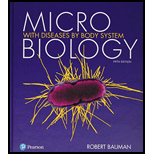
Bacteria infecting the mouth can enter the blood through small cuts resulting from normal brushing and flossing. Why would these bacteria reach the right atrioventricular valve before the other heart valves?
To tell:
The reason for the bacteria which reaches first to the right atrioventricular valve before any other heart valves.
Introduction:
The blood is normally microbes free; that is, it does not contain any microbes like bacteria, virus, fungi, and parasites. However, small brushing and abrasions provide an entrance for the microbes like bacteria to enter the bloodstream. The presence of bacteria in the bloodstream is known as “bacteremia”. The example of some bacteria that may enter the bloodstream is Klebsiella pneumonia, Staphylococcus aureus, Clostridium tetani, and so on.
Explanation of Solution
Bacteria from the mouth enter into to the blood. The blood carries these bacteria to the superior vena cava through which blood enters into the heart. The vena cava then delivered the blood to the right atrium and then into the right ventricle. Before entering the right ventricle it must pass a valve. The valve that is present between the right atrium and right ventricle is called the right atrioventricular valve, so it will be the first valve in which the bacteria will reach before any other heart valve.
The atrioventricular is known to be the first valve for the bacteria to enter when compared with another valve.
Want to see more full solutions like this?
Chapter 21 Solutions
Pearson eText Bauman Microbiology with Diseases by Body Systems -- Instant Access (Pearson+)
- The following table is from Kumar et. al. Highly Selective Dopamine D3 Receptor (DR) Antagonists and Partial Agonists Based on Eticlopride and the D3R Crystal Structure: New Leads for Opioid Dependence Treatment. J. Med Chem 2016.arrow_forwardThe following figure is from Caterina et al. The capsaicin receptor: a heat activated ion channel in the pain pathway. Nature, 1997. Black boxes indicate capsaicin, white circles indicate resinferatoxin. You are a chef in a fancy new science-themed restaurant. You have a recipe that calls for 1 teaspoon of resinferatoxin, but you feel uncomfortable serving foods with "toxins" in them. How much capsaicin could you substitute instead?arrow_forwardWhat protein is necessary for packaging acetylcholine into synaptic vesicles?arrow_forward
- 1. Match each vocabulary term to its best descriptor A. affinity B. efficacy C. inert D. mimic E. how drugs move through body F. how drugs bind Kd Bmax Agonist Antagonist Pharmacokinetics Pharmacodynamicsarrow_forward50 mg dose of a drug is given orally to a patient. The bioavailability of the drug is 0.2. What is the volume of distribution of the drug if the plasma concentration is 1 mg/L? Be sure to provide units.arrow_forwardDetermine Kd and Bmax from the following Scatchard plot. Make sure to include units.arrow_forward
- Choose a catecholamine neurotransmitter and describe/draw the components of the synapse important for its signaling including synthesis, packaging into vesicles, receptors, transporters/degradative enzymes. Describe 2 drugs that can act on this system.arrow_forwardThe following figure is from Caterina et al. The capsaicin receptor: a heat activated ion channel in the pain pathway. Nature, 1997. Black boxes indicate capsaicin, white circles indicate resinferatoxin. a) Which has a higher potency? b) Which is has a higher efficacy? c) What is the approximate Kd of capsaicin in uM? (you can round to the nearest power of 10)arrow_forwardWhat is the rate-limiting-step for serotonin synthesis?arrow_forward
- Surgical Tech For Surgical Tech Pos CareHealth & NutritionISBN:9781337648868Author:AssociationPublisher:Cengage
 Principles Of Radiographic Imaging: An Art And A ...Health & NutritionISBN:9781337711067Author:Richard R. Carlton, Arlene M. Adler, Vesna BalacPublisher:Cengage Learning
Principles Of Radiographic Imaging: An Art And A ...Health & NutritionISBN:9781337711067Author:Richard R. Carlton, Arlene M. Adler, Vesna BalacPublisher:Cengage Learning





